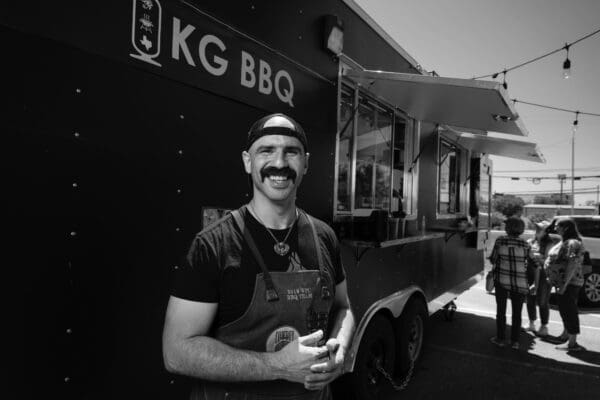East Austin bridging the generational gap
East Austin non-profits try to bridge the generational divide.
Words by Jessi Devenyns Photos by Will Bowling
Wandering around the streets of East Austin, it’s hard not to notice the occasional bungalow sandwiched between new construction and fresh-out-of-the-oven restaurants. It can seem that these homes are out of place and frozen in time making one wonder who has planted their roots so deeply and why.
Their stories are all different. Some inherited their homes, and others bought them by scraping together their savings. Families were raised and lives were lived: some alone and some in the community. But all the stories have one common thread. They lived in East Austin before the roads were paved, and the city provided equal services to all.
Roger DeLeon of Amerigroup works with this elder generation who live in East Austin. Through state funding from the Texas Health and Human Services Department and a group of volunteers, Roger has been working to document these tales of the mid-twentieth century life east of I-35 before they disappear. The idea, he explains, is to merge the generations and acquaint the new with the old.
Those who are telling the stories range from their mid-sixties to their early nineties and have a manuscript of anecdotes that they recount. However, one particular theme that keeps popping up is that East Austin began from humble beginnings. Roger observes that the seniors he interviews often say that “Yes, it may be nice today, but it wasn’t always like this.” At the same time, Roger was assured by seniors that East Austin has changed for the better. Their request is simply for the younger members of the community to retain the memory of how this side of town used to be.
To help accomplish this, Patty Bordie of the Aging and Disability Resource Center of the Capital Area is working with Roger and a team of volunteers to set up the East Austin Story Map. This online resource germinated out of the need to offer seniors a guide to services and activities that were available in their areas, but it didn’t take long before the map took on a secondary role of a story archive. As a digital, interactive chronicle, places on the map are attached to memories of those who passed by half a century ago. Often, the tales recollect moments in places that no longer exist.
Roger remarks that often those who hear the stories react with surprise at the depth of history shared. “And for someone who’s new to East Austin, it’s like, ‘Wow, I didn’t know this was a laundromat, or I didn’t know this was a meat market or a grocery store that ran on credit.’”
It’s no shock that some residents are unaware of the history. The senior population is dwindling as the years pass and the environment changes. Those who are still rooted here, Roger says, don’t always feel welcome in new establishments. “One of the things that stuck out to me this time is they’ve been living in their home for many years, and there’s a coffee shop across the street where they don’t feel welcome.” By creating this story map, the aim is to introduce the two populations to each other. Stories, Patty hopes, will remind younger generations that older Americans are vibrant individuals and pillars in the community who can provide insight, business contributions, and conversation to those who live around them.
Patty clarifies that it is thanks to “what these older adults did to build that community, keep that community, and are a big part of what makes it the beautiful community that it is…”
As time passes, generations change. However, Roger and Patty hope that by creating awareness about the lives of those who laid the foundation for East Austin, the older members of the community will not only have an avenue to express themselves, but they will also be welcomed into today’s East Austin and be allowed to age well in their homes.

Read more stories from the Eastside at https://bit.ly/2SBJpWD














